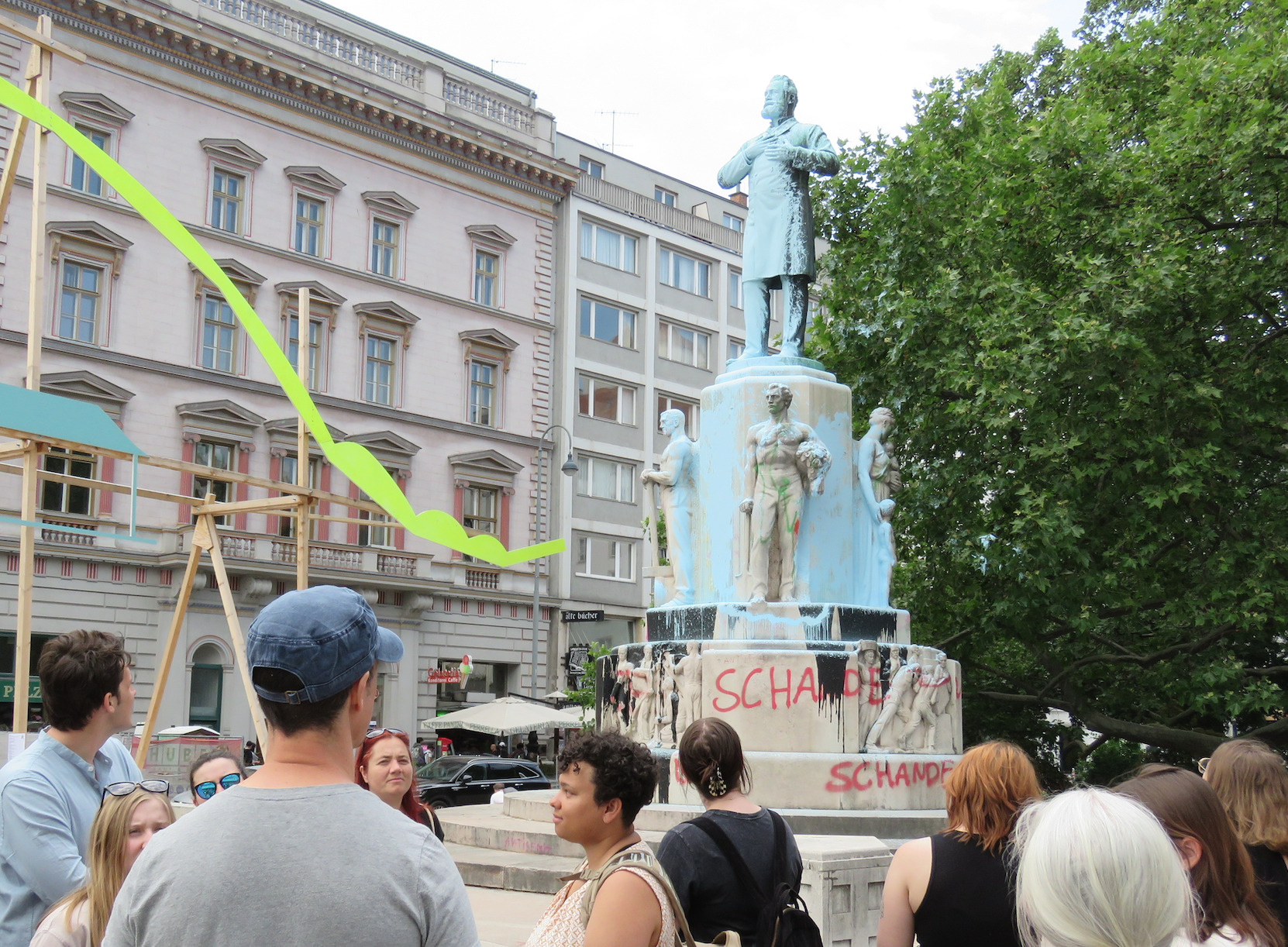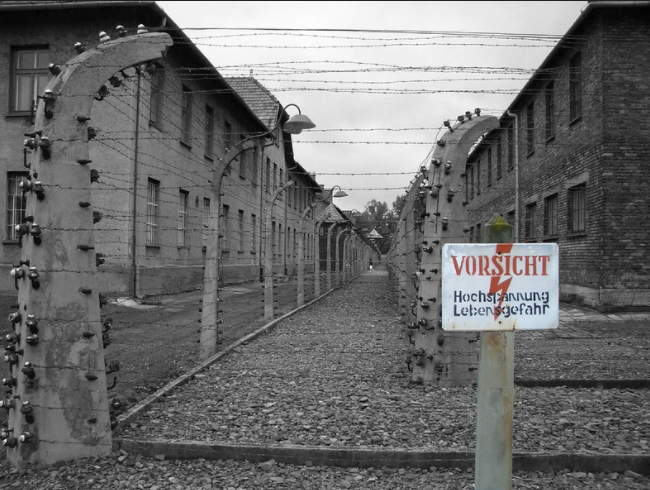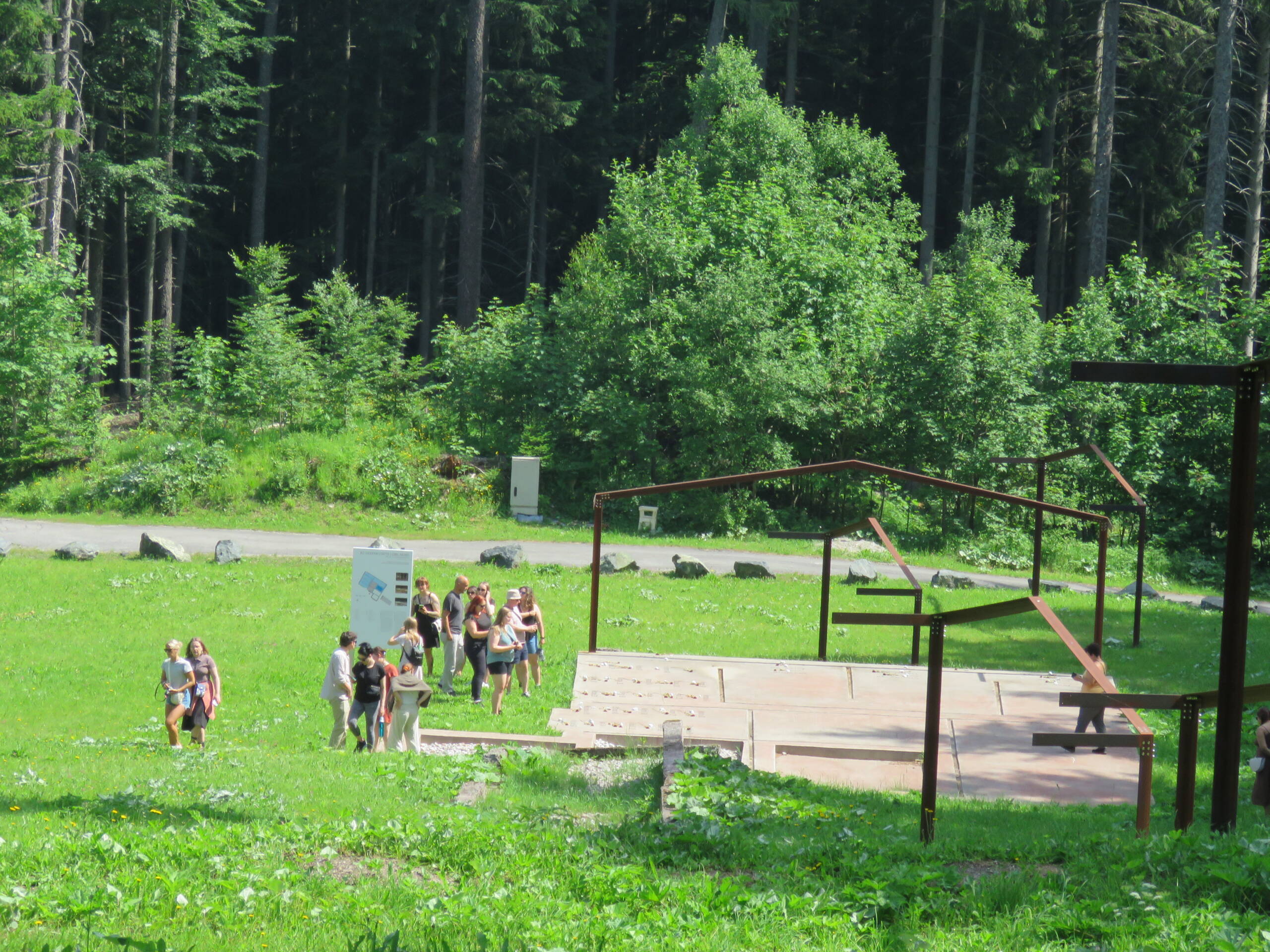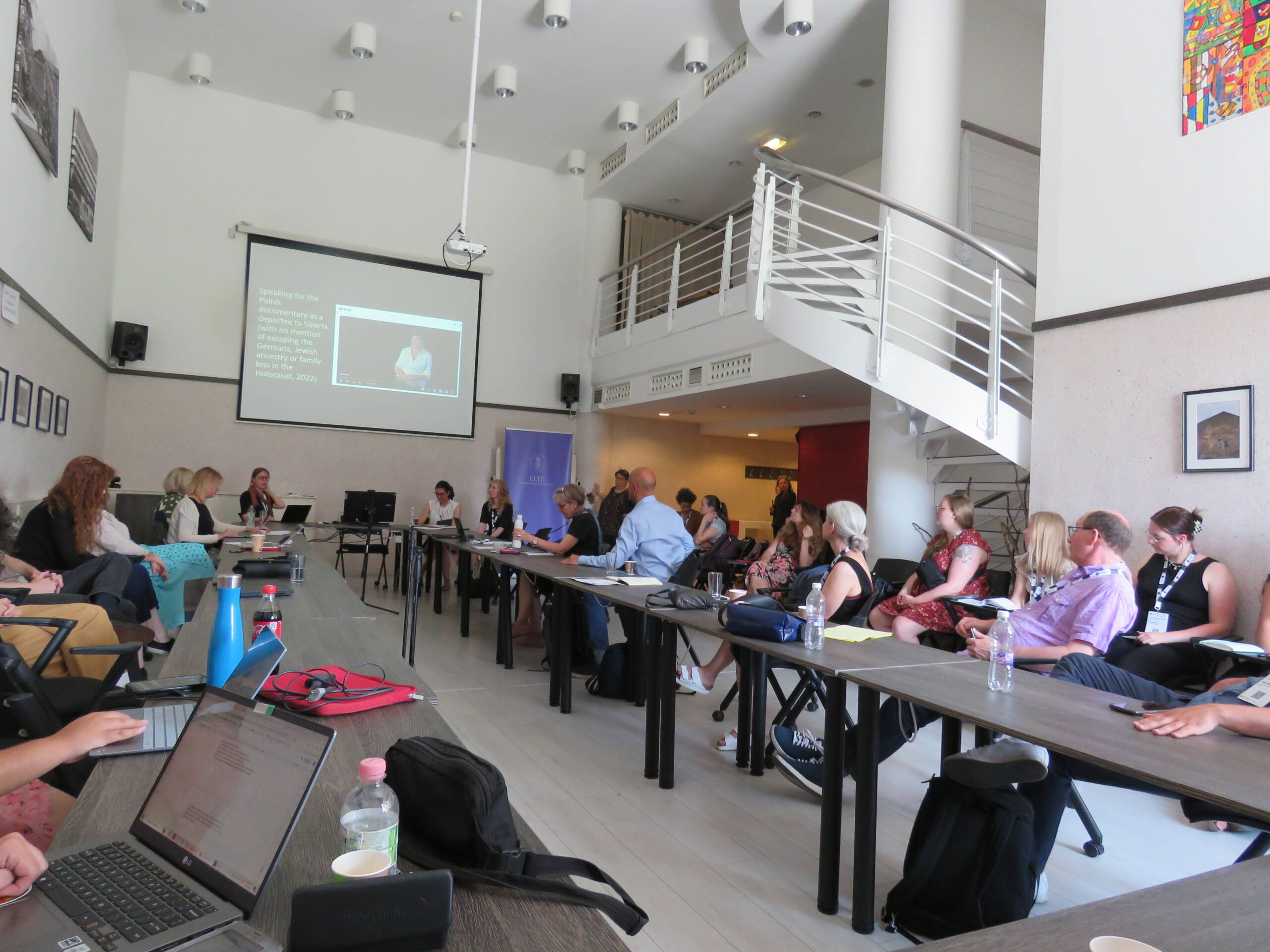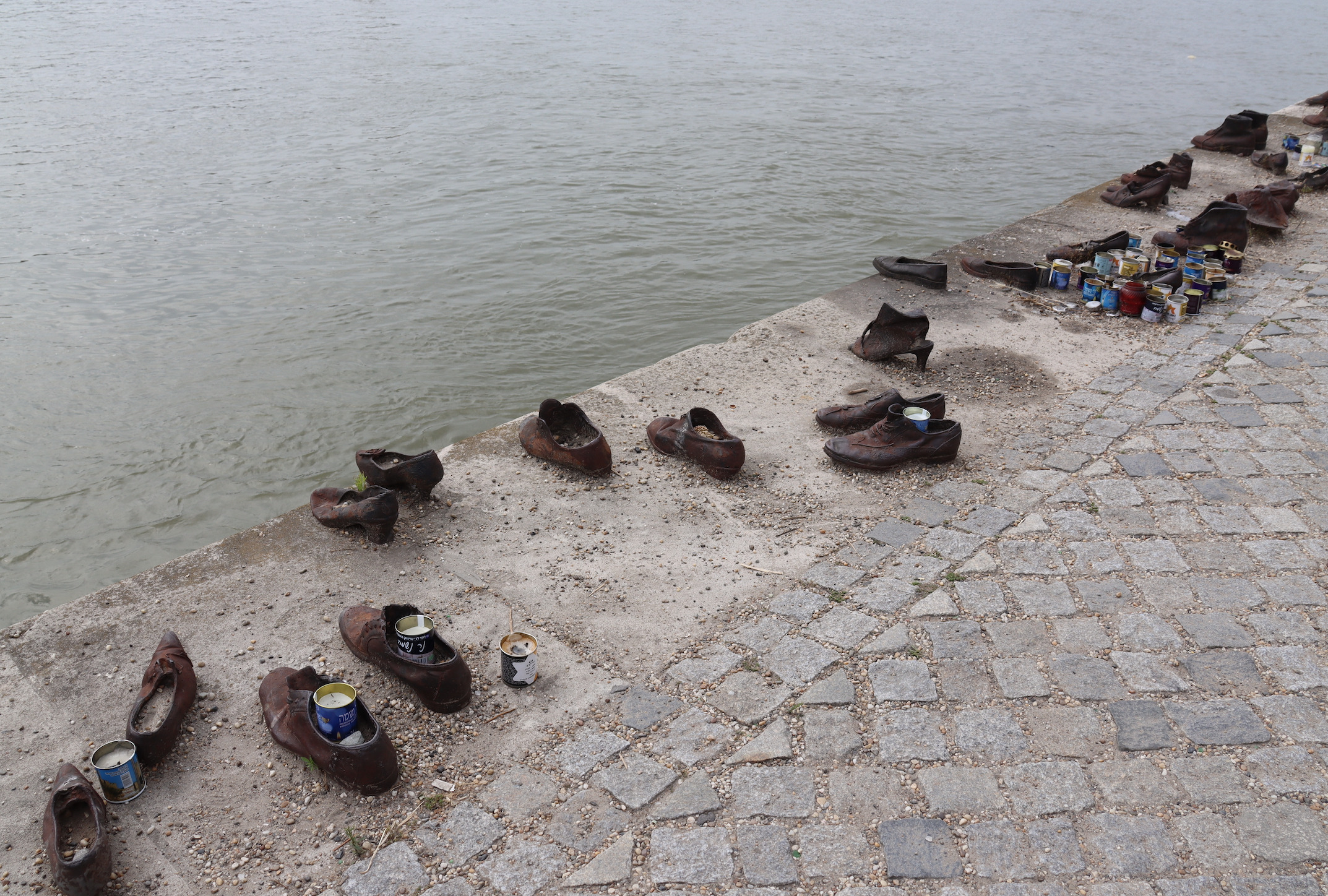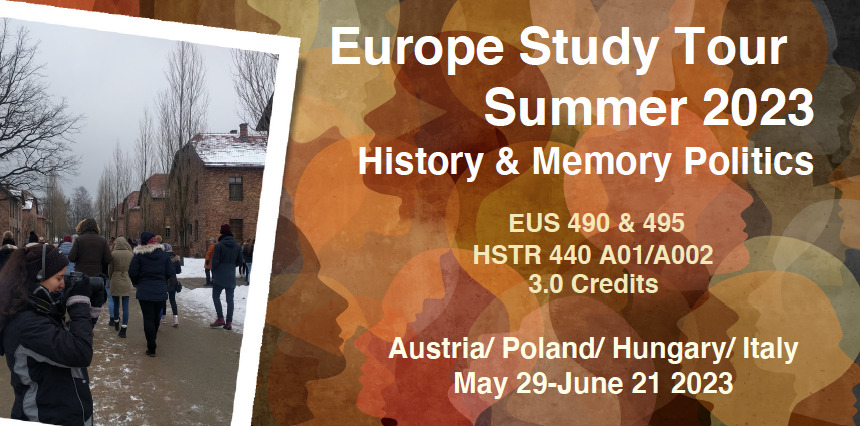How to deal with contested historical memories and statues
Jet-lagged but very excited to start the Study Tour in European Memory Politics, our group witnessed an eye-opening city tour of Vienna’s memorials related to the National Socialism, Holocaust and Austria’s resistance movements by Dr. Bernhard Weidinger. Dr Weidinger is a senior researcher at the Documentation Centre of Austrian Resistance (DÖW) in Vienna, and serves on the academic advisory boards to the Austrian Journal for Historical Studies and to erinnern.at, Austria’s federal program for teaching and learning about National Socialism and the Holocaust. Through his well trained eyes, we witnessed the many sites of commemoration related to Austria’s role in the Third Reich and it struggles to acknowledge its responsibility for the Nazi regime and the Holocaust after 1945. The students were stunt to learn about the many large memorials distributed throughout the inner city of Vienna. At the end of tour, they got introduced to current and highly controversial public debates on the historic figure of Karl Lueger, the anti-Semitic mayor of the Christian Social Party in the Austrian capital between 1897 and 1910, whom Hitler considered to be one of the greatest “German mayors of all time”. The Austrian and Viennese public struggles over how to reconcile Lueger’s achievements in supporting the development of the city and his legacy of anti-Semitism. The statue was visibly smeared with blue and black colour and red letters stating “Schande” (shame). Our guide told us that this form of memory activism and challenge to the traditional memorialization of Lueger has been ongoing for many years. The actions by citizens questioning his legacy and how it is remembered in contemporary Vienna has recently led to an open discussion at the city level on what the best response is to persistent calls for changing or dismantling the statue. Just when we arrived, the city council decided to honour the public calls for reconsidering the commemoration of Lueger and decided to tilt the statue 3.5 degrees in order to provide a public space for the debates surrounding this political figure.
On the one hand, many students were surprised that a discussion took place at the highest level of the city and that citizens were invited to participate in an open competition for the best ideas on how to deal with this contested memorial. Thinking of the situation in Victoria where the statue of James Cook was removed and the debates surrounding this historical figure feel unresolved, the approach in Vienna seemed bold and productive. The critical component is to provide a voice to the citizens of the city and ask for their input regarding the best way to deal with past injustices and the commemoration of historical figures who were involved in them. On the other hand, it was clear to many participants of the study tour that this solution now put forth by the city of Vienna is not likely to lead to a broadly accepted end of the debate. Rather, it is probable that the public discontent with the official commemoration of Lueger’s legacy will continue and that grassroots action in addressing the difficult past of treating Vienna’s or Austria’s Jewish population will not cease.
Beate Schmidtke, Co-Lead of EUCAnet and Manager if the Jean Monnet Network European Memory Politics
